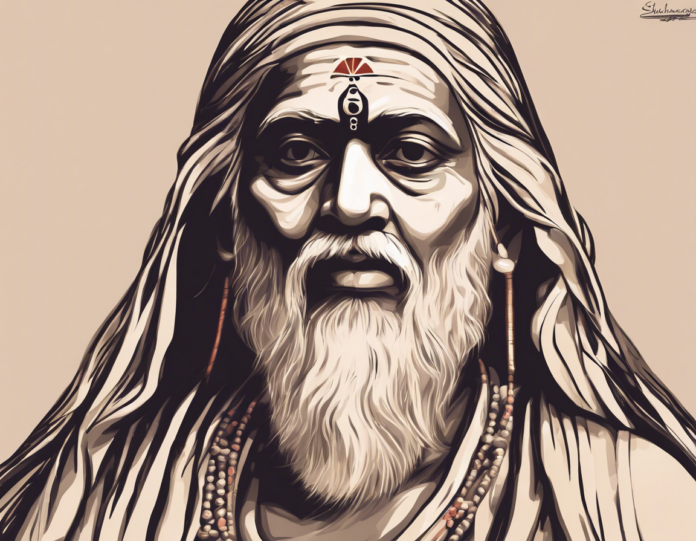Introduction
The concept of Shankaracharya carries deep significance in Hindu philosophy and spiritual traditions. The term itself refers to a spiritual leader or guru in the Advaita Vedanta tradition that was established by Adi Shankaracharya in the 8th century. Adi Shankaracharya is renowned for his profound teachings on non-dualism and his contributions to the philosophy of Vedanta. The word Shankaracharya is often used to refer to the heads of the four main monasteries (mathas) established by Adi Shankaracharya in different parts of India. Each matha is associated with a specific region of the country and has its own spiritual legacy and traditions.
The Legacy of Adi Shankaracharya
Adi Shankaracharya is considered one of the greatest philosophers and spiritual leaders in Indian history. He is credited with revitalizing Hinduism and Advaita Vedanta during a period of decline. Shankaracharya’s teachings emphasized the unity of the individual soul (Atman) with the universal consciousness (Brahman) and stressed the illusory nature of the material world. His commentaries on the Upanishads, Bhagavad Gita, and Brahma Sutras are considered authoritative texts in Advaita Vedanta philosophy.
The Shankaracharya Mathas
After establishing the spiritual and philosophical foundations of Advaita Vedanta, Adi Shankaracharya founded four monasteries, or mathas, in different parts of India to propagate his teachings and preserve the Advaita tradition. These mathas are located in Sringeri (Karnataka), Dwarka (Gujarat), Puri (Odisha), and Joshimath (Uttarakhand). Each matha is headed by a Shankaracharya who is considered the spiritual leader of the region and the lineage.
Roles and Responsibilities
The Shankaracharyas serve as both spiritual and administrative heads of their respective mathas. They are responsible for overseeing the spiritual practices, rituals, and teachings of the monastery, as well as managing its assets and properties. The Shankaracharyas also play a crucial role in upholding the traditions of Advaita Vedanta and guiding their followers on the path of self-realization and liberation.
The Significance of Shankaracharya Images
Images of Shankaracharyas are considered sacred and are often used in temples, homes, and spiritual centers as objects of veneration and devotion. These images serve as reminders of the teachings and legacies of Adi Shankaracharya and his successors. In addition to their religious and spiritual significance, Shankaracharya images are also valued for their artistic and aesthetic appeal.
Types of Shankaracharya Images
Shankaracharya images come in various forms and styles, reflecting the diverse cultural and artistic traditions of India. Some of the common types of Shankaracharya images include paintings, sculptures, photographs, and digital artworks. These images often depict the Shankaracharya in a traditional pose, with symbols such as the rudraksha beads, trishul (trident), and kamandalu (water pot).
Devotional Practices
Devotees of Shankaracharya often engage in various devotional practices to honor and connect with the spiritual legacy of the great philosopher. This can include reciting prayers, chanting mantras, meditating on Shankaracharya’s teachings, and participating in rituals and ceremonies dedicated to the guru. The presence of Shankaracharya images in homes and temples serves as a focal point for these devotional practices and helps cultivate a deeper connection with the spiritual lineage.
The Symbolism of Shankaracharya Images
Shankaracharya images are rich in symbolism, conveying profound spiritual truths and teachings through visual representations. The rudraksha beads worn by Shankaracharyas symbolize purity and detachment from worldly desires. The trishul represents the three gunas (qualities) of nature – sattva, rajas, and tamas – as well as the trinity of Brahma, Vishnu, and Shiva. The kamandalu symbolizes the renunciation of worldly attachments and the pursuit of spiritual knowledge.
Contemporary Relevance
In contemporary times, Shankaracharya images continue to inspire and guide spiritual seekers on the path of self-discovery and enlightenment. The teachings of Adi Shankaracharya and the Shankaracharya mathas remain vital institutions for the preservation and propagation of Advaita Vedanta philosophy. By venerating Shankaracharya images and embodying his teachings in their lives, devotees can strive towards realizing the ultimate truth of non-duality.
Conclusion
The captivating images of Shankaracharya offer a glimpse into the profound legacy and teachings of one of India’s greatest spiritual masters. These images serve as portals to the realm of Advaita Vedanta philosophy and provide devotees with a tangible connection to the spiritual lineage of Adi Shankaracharya. Through devotion, contemplation, and practice, followers of Shankaracharya can deepen their understanding of the ultimate reality and strive towards spiritual liberation.
Frequently Asked Questions (FAQs)
1. What is the significance of Shankaracharya in Hindu philosophy?
Shankaracharya is revered as a great philosopher and spiritual leader who revitalized Hinduism and Advaita Vedanta during a critical period in Indian history. His teachings on non-dualism and the unity of the individual soul with the universal consciousness have had a profound impact on Hindu philosophy and spirituality.
2. Why are Shankaracharya images considered sacred?
Shankaracharya images are considered sacred because they represent the spiritual lineage and teachings of Adi Shankaracharya and his successors. Devotees venerate these images as a way to connect with the wisdom and blessings of the great philosopher and to seek guidance on their spiritual journey.
3. How can one incorporate Shankaracharya images into daily spiritual practices?
One can incorporate Shankaracharya images into daily spiritual practices by setting up a sacred space for veneration, offering prayers and incense, meditating on the teachings of Shankaracharya, and seeking guidance and inspiration from the guru’s image.
4. What are some common symbols found in Shankaracharya images?
Common symbols found in Shankaracharya images include the rudraksha beads, trishul (trident), and kamandalu (water pot). Each of these symbols carries deep spiritual significance and represents aspects of renunciation, spiritual knowledge, and the interconnectedness of the universe.
5. How can Shankaracharya images help in deepening one’s spiritual practice?
Shankaracharya images can serve as focal points for contemplation, meditation, and devotional practices. By connecting with the energy and teachings embodied in the guru’s image, practitioners can deepen their understanding of non-duality, self-realization, and the ultimate truth of existence.
6. Are there specific rituals or ceremonies associated with Shankaracharya images?
While there are no strict rituals associated with Shankaracharya images, devotees may choose to perform arati (ceremonial worship with a lamp) or offer flowers, incense, and fruits as symbols of devotion and gratitude. Some may also choose to recite specific mantras or prayers dedicated to Shankaracharya during their spiritual practices.
7. How can one learn more about the life and teachings of Adi Shankaracharya?
There are numerous books, articles, videos, and online resources available that provide insights into the life and teachings of Adi Shankaracharya. Interested individuals can explore these resources to gain a deeper understanding of the great philosopher and his profound contributions to Hindu philosophy and spirituality.
8. What is the role of Shankaracharyas in contemporary society?
Shankaracharyas continue to play a vital role in preserving and propagating the teachings of Advaita Vedanta and guiding spiritual seekers on the path of self-realization. They serve as spiritual mentors, community leaders, and guardians of tradition, offering guidance and wisdom to those seeking spiritual upliftment in today’s world.

